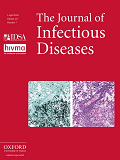
Authors: Clara E Negri, Adam Johnson, Laura McEntee, Helen Box, Sarah Whalley, Julie A Schwartz, V Ramos-Martín, Joanne Livermore, Ruwanthi Kolamunnage-Dona, Arnaldo L Colombo, William W Hope.
Abstract
Background
Aspergillus flavus is one of the most common agents of invasive aspergillosis and is associated with high mortality. The orotomides are a new class of antifungal agents with a novel mechanism of action. An understanding of the pharmacodynamics (PD) of the lead compound F901318 is required to plan safe and effective regimens for clinical use.
Methods
The pharmacokinetics (PK) and PD of F901318 were evaluated by developing new in vitro and in vivo models of invasive fungal sinusitis. Galactomannan was used as a pharmacodynamic endpoint in all models. Mathematical PK-PD models were used to describe dose-exposure-response relationships.
Results
F901318 minimum inhibitory concentrations (MICs) ranged from 0.015 to 0.06 mg/L. F901318 induced a concentration-dependent decline in galactomannan. In the in vitro model, a minimum concentration:MIC of 10 resulted in suppression of galactomannan; however, values of approximately 10 and 9–19 when assessed by survival of mice or the decline in galactomannan, respectively, were equivalent or exceeded the effect induced by posaconazole. There was histological clearance of lung tissue that was consistent with the effects of F901318 on galactomannan.
Conclusions
F901318 is a potential new agent for the treatment of invasive infections caused by A flavus with PDs that are comparable with other first-line triazole agents.